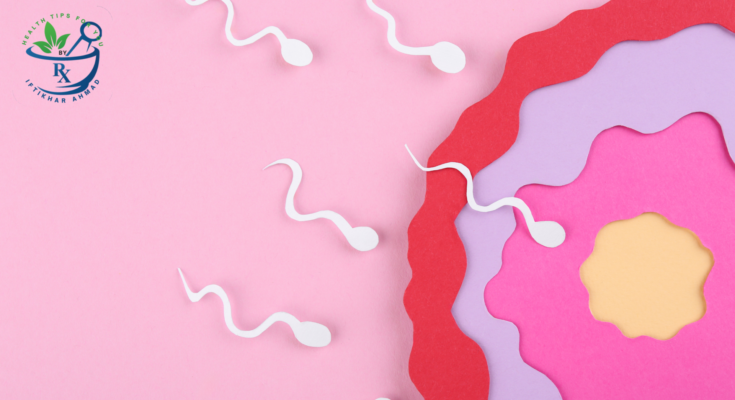It is unbelievable how the issue of male infertility is influencing the barrenness of many couples all over the world but the least discussed topic. Ectopic pregnancy, as a complication, contributes to 20% of fertility problems globally; moreover, it can account for 40-50% of infertility issues. Hence, this article aims to provide readers with a comprehensive understanding of male infertility causes, symptoms, and treatments.
Causes of Male Infertility
There are three different categories of causes that lead to male infertility, namely medical, environmental and lifestyle. To understand these types, let’s discuss these categories in detail.
Medical Causes
Azoospermia:
This condition refers to the situation where sperm is absent from the semen, though it can be due to a physical blockage or other reason. Conditions that give rise a non-obstructive azoospermia are chiefly laced with impaired production of sperms.
Varicocele Infertility:
Varicocele can be defined as the varicosity of the vessels within the scrotal tissues which can negatively impact the number of sperm produced as well as their quality.
Cystic Fibrosis:
It is well documented that male patients with CF suffer from congenital bilateral absence of the vas deferens (CBAVD), consequently resulting in the infertility of most CF men.
Klinefelter Syndrome:
This is a genetic condition that has consequences on the physical and the intellectual development of the male and they are infertile due to azoospermia or extreme OAOT.
Diabetes and Fertility:
Also, diabetic neuropathy may affect the functionality of the nervous system responsible for ejaculation and impaired sperm quality.
Hypogonadism:
This condition constitutes for low levels of hormones specifically Testosterone, this affects sperm production which ultimately affects fertility.
Cryptorchidism:
Sometimes undescended testicles present a medical condition if not corrected from childhood causes infertility.
Infections:
Diseases of the male reproductive system, such as epididymitis and prostatitis, as well as certain sexually transmitted diseases like Chlamydia, have been found to significantly impact sperm viability.
Tumors:
Tumors can be both; benign and malignant tumors, hence it can develop in the male reproductive organs as well as the gland that is responsible for the production of hormones that are associated with male reproductive processes.
Environmental Causes
Radiation and Chemotherapy:
Cancer treatment options adversely affect sperm production for a long-term period and contributes to infertility.
Industrial Chemicals:
Extended exposure to pesticides, herbicides, and heavy metals not only leads to a decreased sperm count but also impairs their ability to navigate independently.
Lifestyle Causes
Smoking and Alcohol:
These may reduce sperm count, concentration, and motility, among other aspects.
Obesity:
This is because being overweight is associated with hormonal imbalance which in turn has impacts on sperm count.
Hot Baths and Hot Tubs:
Prolonged exposure to heat results in the stress of sperm cells, and therefore impacts the fertility rate of men.
Symptoms of Male Infertility
The most noticeable sign of this condition is infertility or the inability to produce offspring. However, other signs may include:
- Disorders of sexual desire, such as low sexual desire and erectile dysfunction.
- Symptoms such as ball-like formations, pain in or around the scrotum or groin, and swollen lymph nodes may indicate underlying issues.
- Recurrent respiratory infections.
- Inability to smell.
- Gynecomastia (enlarged breasts).
- Loss of facial or body hair, such as stubble that would normally grow back in days, and absence of grey hair or balding.
Diagnosis For Male Infertility
Diagnosing male infertility typically involves a comprehensive evaluation, including diagnosing male infertility.
Semen Analysis:
This diagnostic procedure is crucial for screening individuals with infertility issues, particularly those exhibiting subnormal sperm count, motility, and morphological abnormalities.
Hormone Testing:
Conducted to assess testosterone levels and other relevant hormonal factors, this testing is essential in evaluating reproductive health.
Genetic Testing:
This testing serves to identify any inheritable components contributing to infertility, providing valuable insights into potential genetic factors at play.
Testicular Biopsy:
In assessing the viability of sperms in the laboratories especially in fertility clinics.
Imaging:
Mammography or sonography for structural irregularity identification.
Treatments for Male Infertility
Medical Treatments
Surgery:
For rectifying circumstances such as varicocele and little blockage issues.
Medications:
Starting with the use of antibiotics in treating infections, hormonal treatment such as hormone replacement therapy and gonadorelin stimulates hormonal support.
Assisted Reproductive Technology (ART):
Among the treatments that have proven to be effective are intracytoplasmic sperm injection and in vitro fertilization.
Natural and Herbal Remedies
While medical treatments are crucial, natural remedies can complement them:
CoQ10:
It can help lessen oxidative stress and increase the concentration of sperm samples.
Ashwagandha:

Acclaimed for its capacity to boost testosterone levels and increase sperm concentration.
Maca Root: A Magic Remedy For Male Infertility

Strengthens the sexual desire and also the forward movement of sperms.
Zinc and Folic Acid:
Nutrients required for sperm production are essential, and similarly, maternal nutrition is crucial throughout embryonic development.
Healthy Diet To Cope Male Infertility

The following are approaches to healthy eating which entails the intake of fruits, vegetable, whole grains and lean meat.
Regular exercise
In addition to cutting down on stress, is also beneficial for managing a healthy weight.
Conclusion
Male infertility is a multifaceted condition, intricately interwoven with an array of medical, environmental, and lifestyle factors, all of which play significant roles in its complexity. Consequently, awareness of signs of depression and how one can seek the right attention is crucial. The use of endoscopic procedures alongside traditional medicine and changes to the woman’s daily routine can lead to dramatic changes in her overall fertility. This is a general guideline of how to take care of one’s skin and it is recommended that one should seek the help of a physician before trying anything new.
References
- Cooper, T. G., Noonan, E., von Eckardstein, S., Auger, J., Baker, H. W., Behre, H. M., … & Vogelsong, K. M. (2010). World Health Organization reference values for human semen characteristics. *Human Reproduction Update*, 16(3), 231-245.
- Thonneau, P., & Spira, A. (1991). Epidemiology of infertility. *Rev Epidemiol Sante Publique*, 39(5), 373-378.
- Nieschlag, E., & Behre, H. M. (2010). *Andrology: Male Reproductive Health and Dysfunction*. Springer Science & Business Media.
- Agarwal, A., Mulgund, A., Hamada, A., & Chyatte, M. R. (2015). A unique view on male infertility around the globe. *Reproductive Biology and Endocrinology*, 13(1), 1-9.
- Patel, D. P., & Niederberger, C. (2011). Male infertility: The other side of the equation. *Obstetrics and Gynecology Clinics*, 38(4), 773-785.





